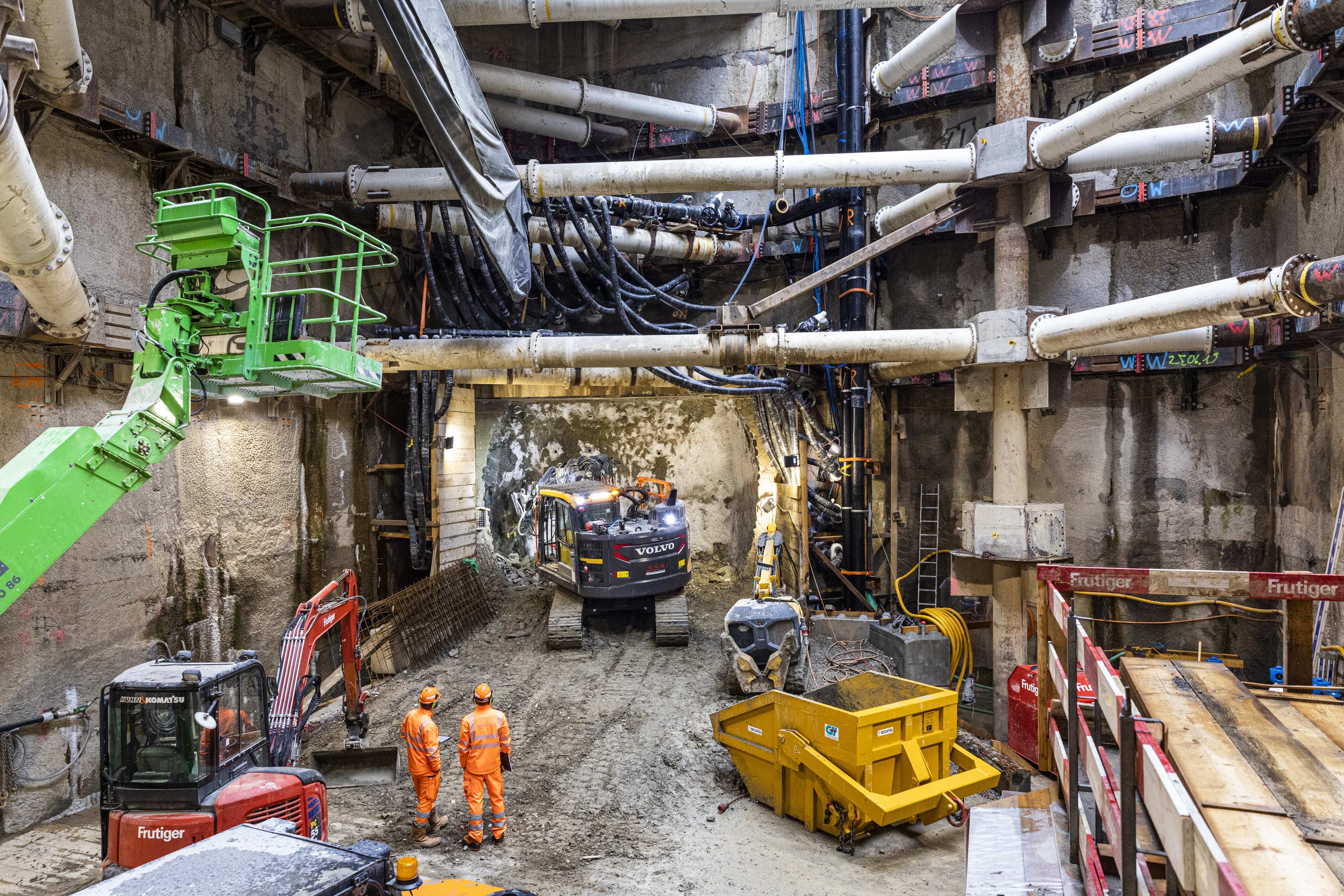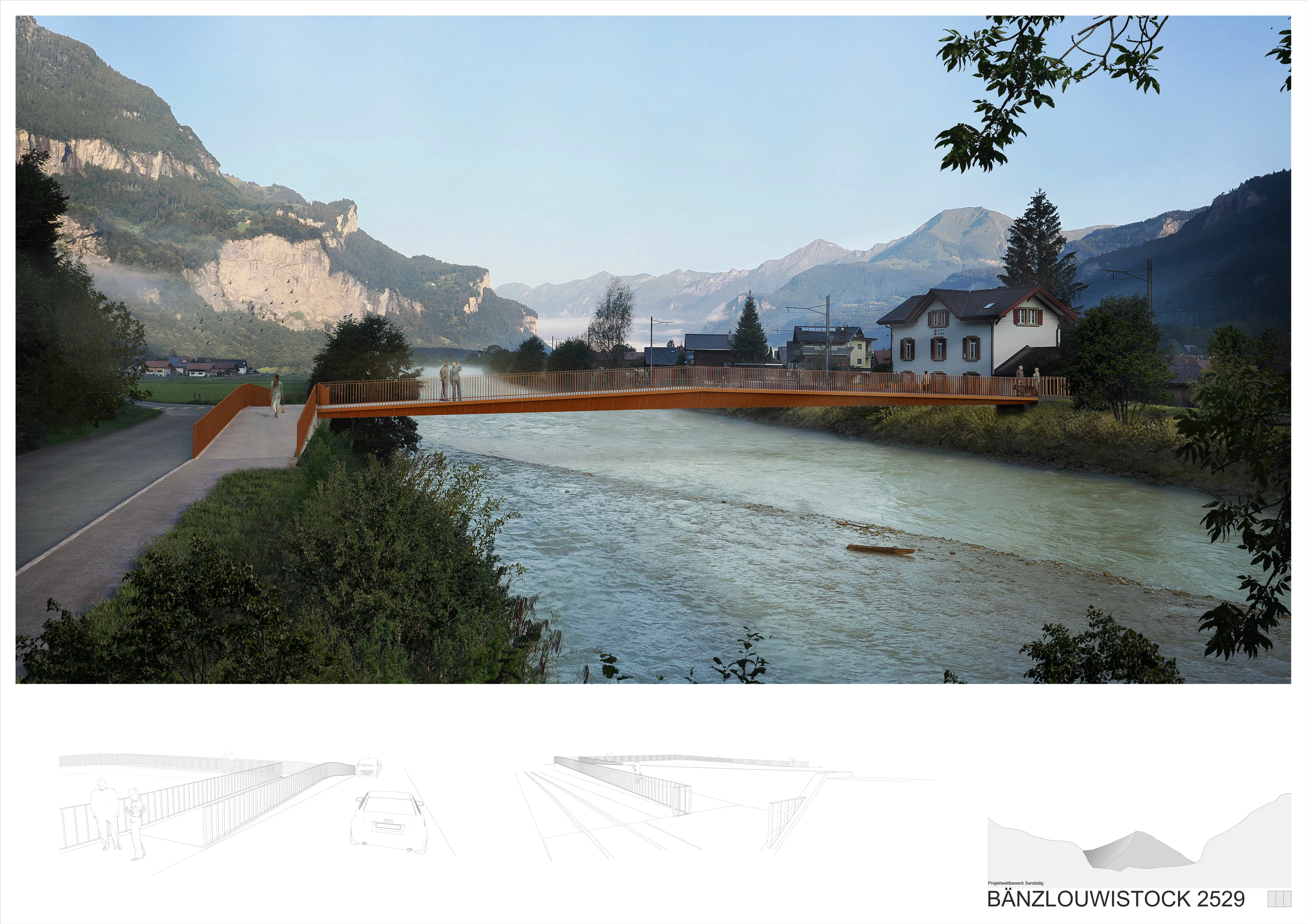Playing with fire for the future of Bern railway station: smoke test validates safety at major construction site
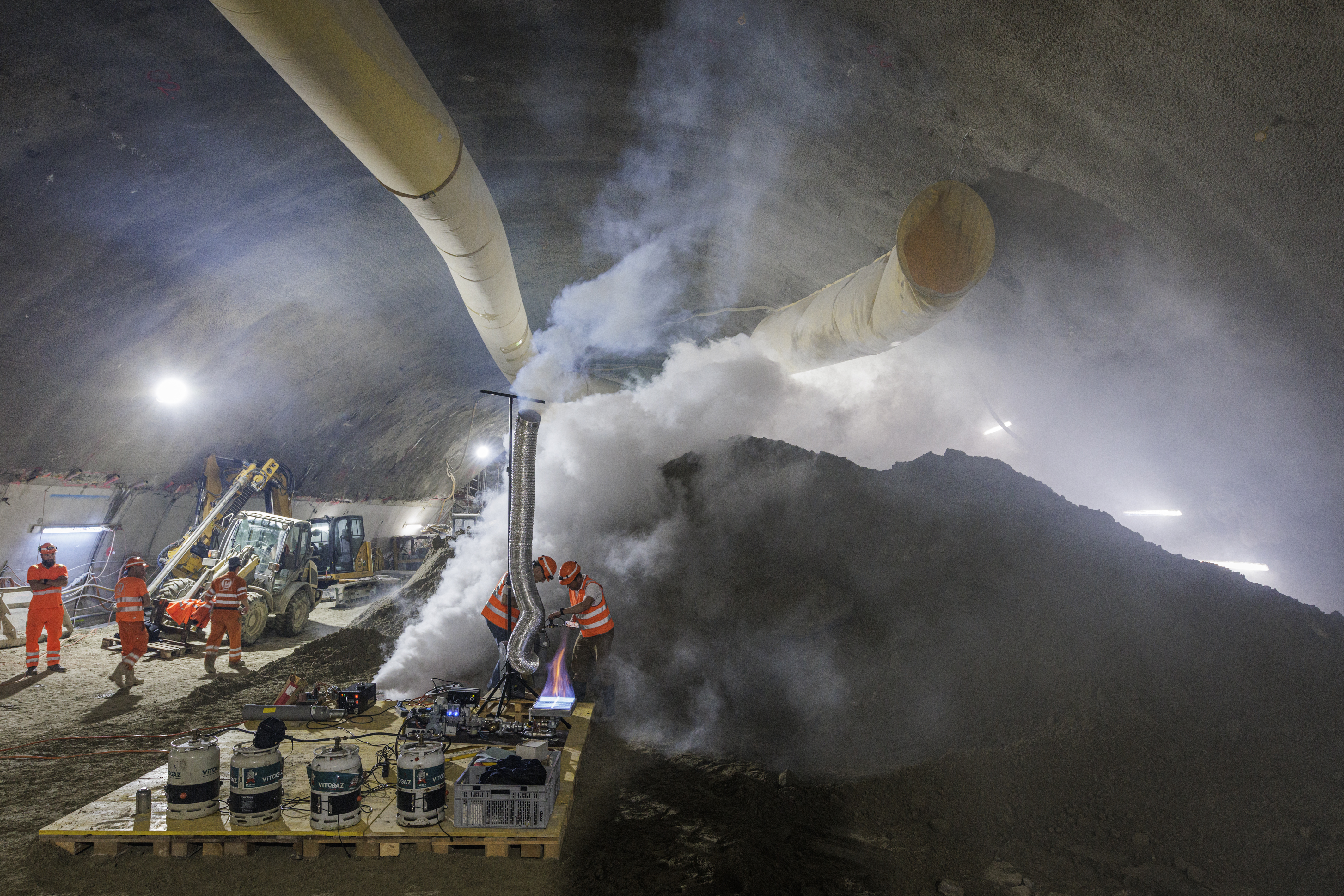
A new railway station for regional rail transport between Bern and Solothurn (RBS) is under construction underneath the SBB railway station in Bern and is scheduled for completion in 2029. Many construction workers are excavating two huge underground caverns from an access gallery. Would the construction workers have enough time to evacuate safely in the event of a fire? This is a question we were able to answer for RBS by conducting a hot smoke test.
The space underground is constrained and the temperature several degrees cooler than on the surface. The only light is provided by construction floodlights. Noise from several construction machines echoes through the site. We are located about 12 to 29 metres below tracks 2 to 7 of Bern's main railway station. Down here, the project for constructing the shells of two caverns for the Regional Transport Bern-Solothurn (RBS) is scheduled for completion by 2026. The new underground station will significantly increase the capacity of regional rail transport. A considerable number of construction workers are working daily on the large-scale project, while higher up, trains continue to run to all destinations in Switzerland.
Fire simulation using IZAR
A small excavator moves a platform made of yellow construction plates into one of the two future caverns. On it stands an unassuming, small apparatus with a silver hose sticking up like a snorkel. "This is the star of the day, so to speak," explains Christoph von Stauffenberg, Fire Protection project manager at Basler & Hofmann. "IZAR is our patented system for conducting hot smoke tests." The mobile equipment was lowered down the access shaft by tower crane and transported by excavator to the first test point. "Today, we want to use IZAR to test the fire control system for the construction ventilation system. Tests at three different locations are meant to provide an answer to the question of whether the construction workers down here would have enough time to escape or evacuate in the event of a fire," says Erich Hugi (also Fire Protection project manager at Basler & Hofmann), summarising the day's mission.

Real validation of construction site safety
Normally, IZAR is used to simulate real fires to supplement computer-based smoke extraction simulations and supply the validation required by the fire protection authorities. It is the first time that IZAR has been used on the construction site and so the situation is new for Basler & Hofmann's fire protection team. "For construction sites like this, no specific fire protection concept is required by the authorities. Fire protection is part of the general construction site safety concept. Since there was no specific fire case, the contractor designed and installed the fire control system for the construction ventilation system to the best of their knowledge and experience. IZAR will now supply the validation that the safety system works and ensure more safety for the contractors, the client and the emergency services," explains Erich Hugi.
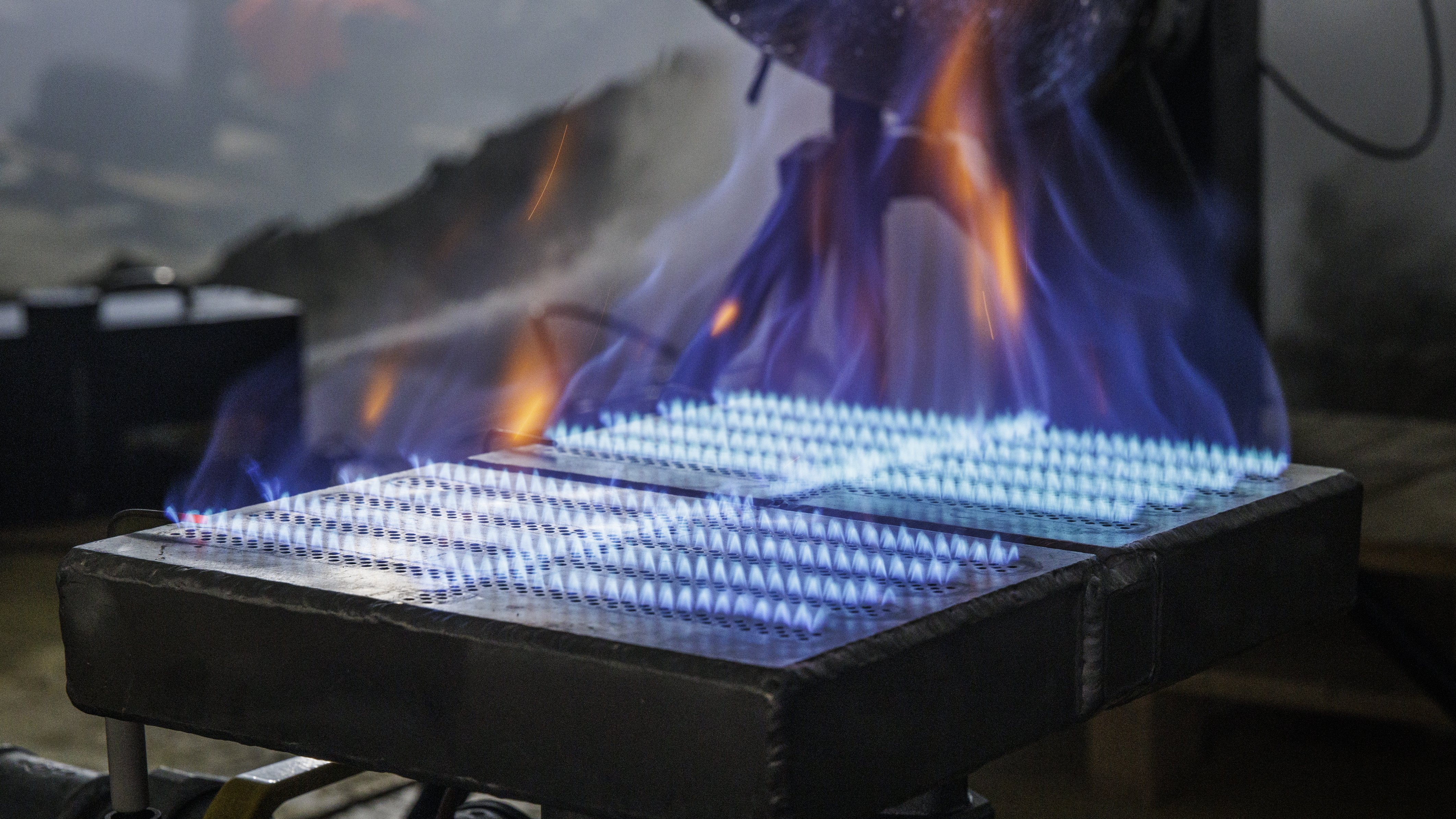
Lots of hot air and white smoke
Flames are already flaring up from the IZAR burner. At the same time, white smoke rises from the "silver snorkel" on the right of the burner and spreads through the cavern. The smoke acts as a tracer for the tests. Using mobile phone cameras, the team records how quickly the smoke spreads at various locations in the many branches of the underground construction site and whether the fire control system of the ventilation system operates as designed. The standard control system and the fire control system of the construction ventilation system are tested at each test location. IZAR is then transported by excavator to the next test location. The system can be used to recreate fire situations quickly, safely and ecologically. A single burner module produces 160kW of convective heat. Since the blue flames themselves hardly radiate any heat, they are harmless to humans. The same applies to the white smoke which is mixed with air to prevent the release of harmful emissions. "IZAR and the smoke fluid are completely harmless. That's why we also use the system in indoor locations such as concert halls, shopping centres, cinemas or even airports," explains Christoph von Stauffenberg.
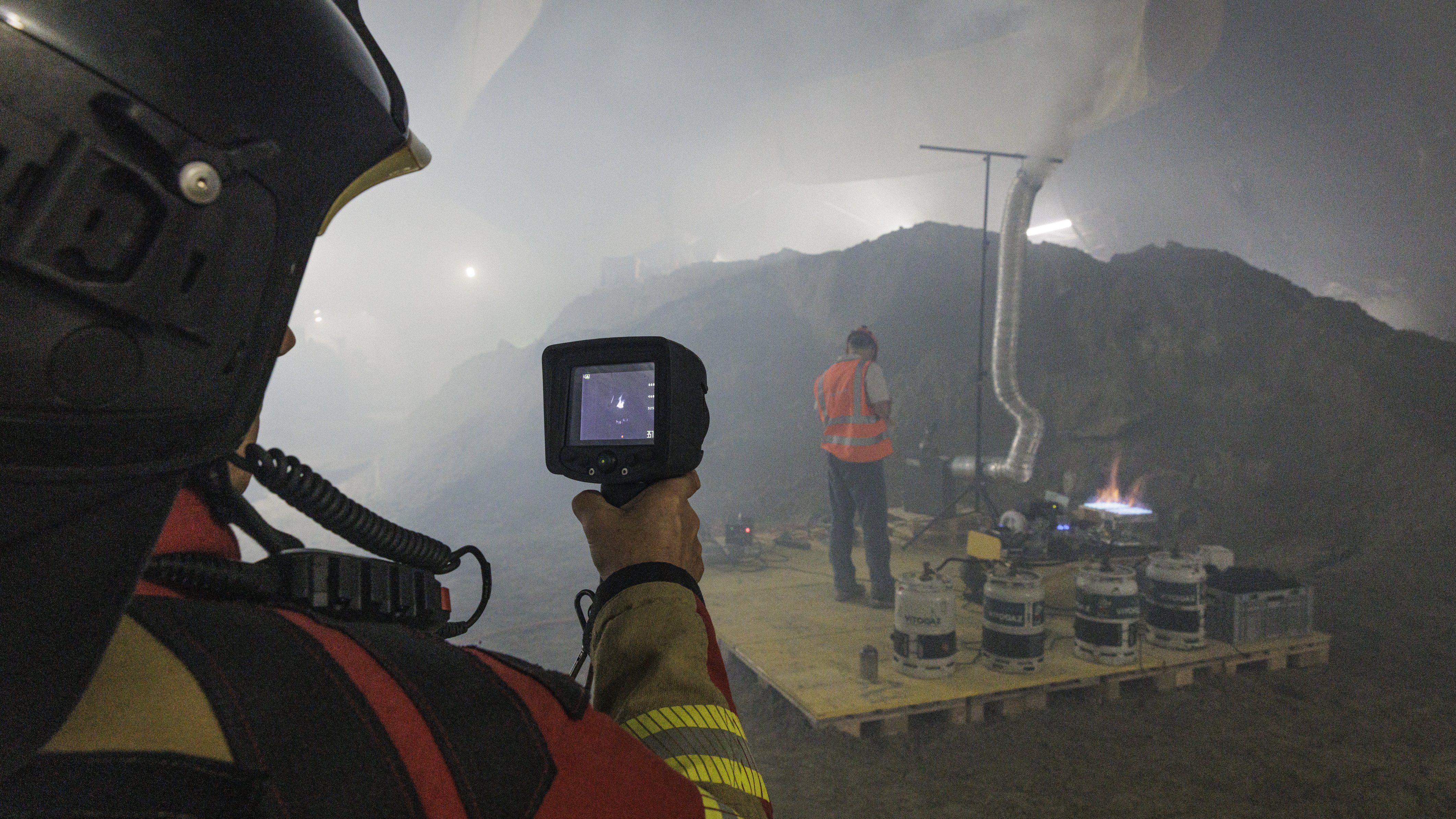
The fire brigade also looks on with fascination
In normal operation, the large underground construction site is ventilated. If there is a fire in one of the caverns, the ventilation system can be switched to extraction by means of an emergency switch. Switch-over takes only a few minutes. During this time, overpressure ensures that smoke is extracted from the caverns via the access galleries and the shaft and is blown out to the open air. Meanwhile, construction personnel can take refuge in the rescue container. When the ventilation system starts, smoke extraction flaps open in the transition area of the access gallery and the caverns. They extract the smoke from the access gallery and ensure a smoke-free escape and access route for the fire brigade. The crux of the set-up: outside on the installation platform, the ventilation pipes of the two caverns are right next to each other. "So, one of the key issues of the smoke tests is to find out how much undesirable interaction there is between the fresh air supply and the smoke extraction system on the construction site," says Erich Hugi. This also interests the professional Bern fire brigade, which is monitoring the tests on site as a precaution.
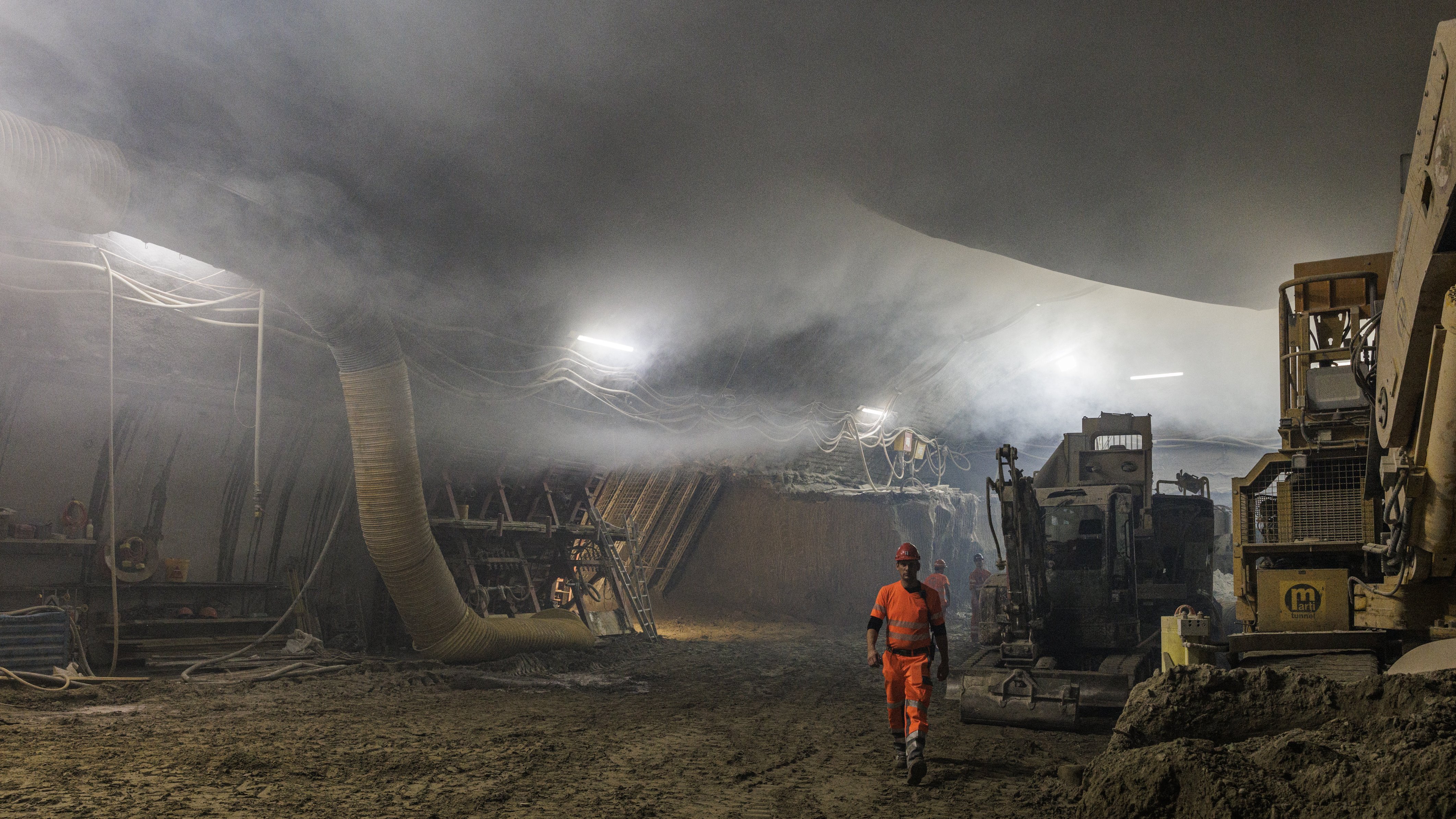
Test passed
Even though the complete underground construction site is temporarily filled with smoke, the results of the tests are satisfactory. "We were unable to detect any short circuiting between the ventilation and extraction systems. In addition, the test demonstrated that construction workers would have enough time to escape safely and the inflow of fresh air would support access by the fire brigade. So, work can continue in all safety," says Christoph von Stauffenberg. IZAR has therefore fulfilled its task for today and is ready for its next assignment.
